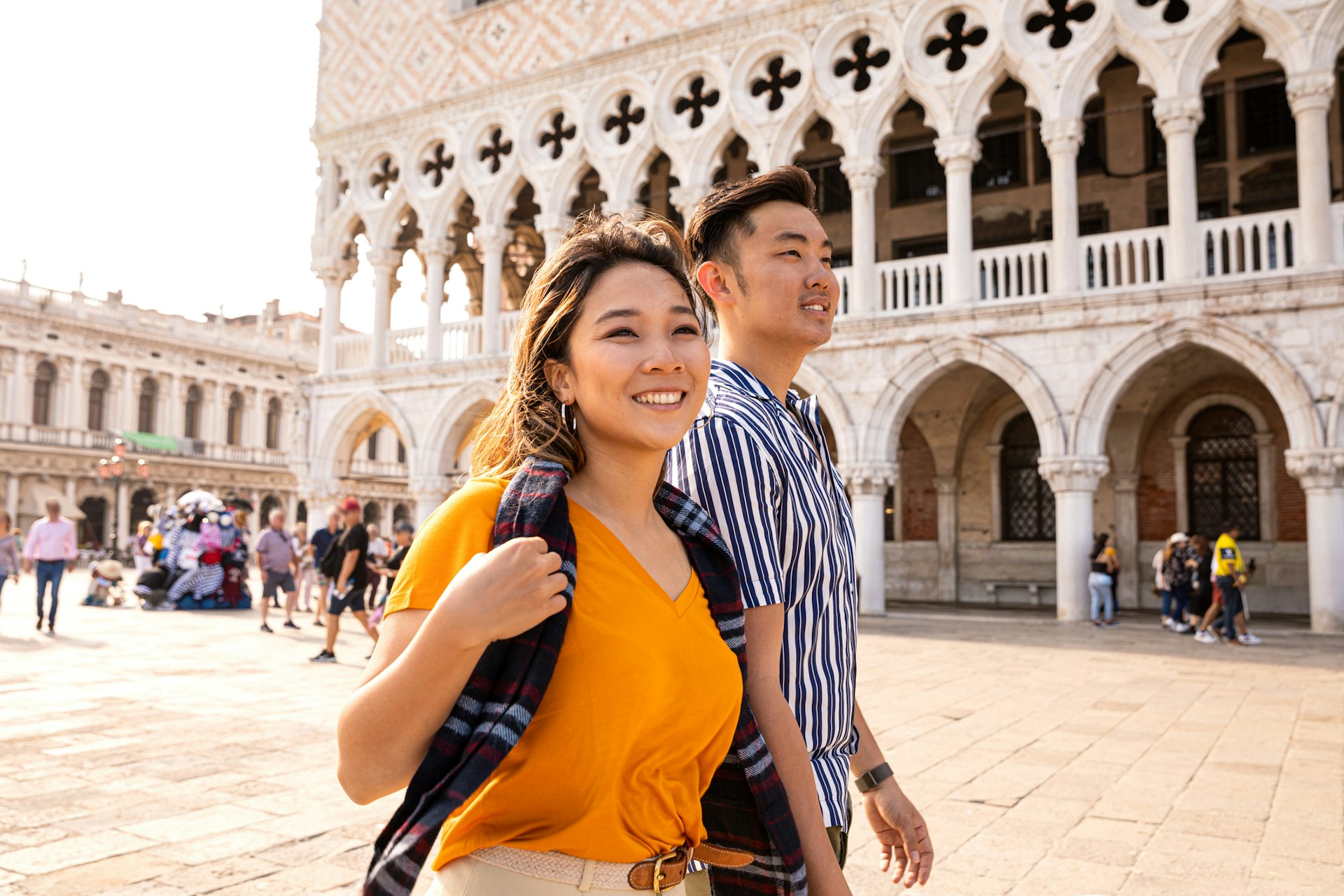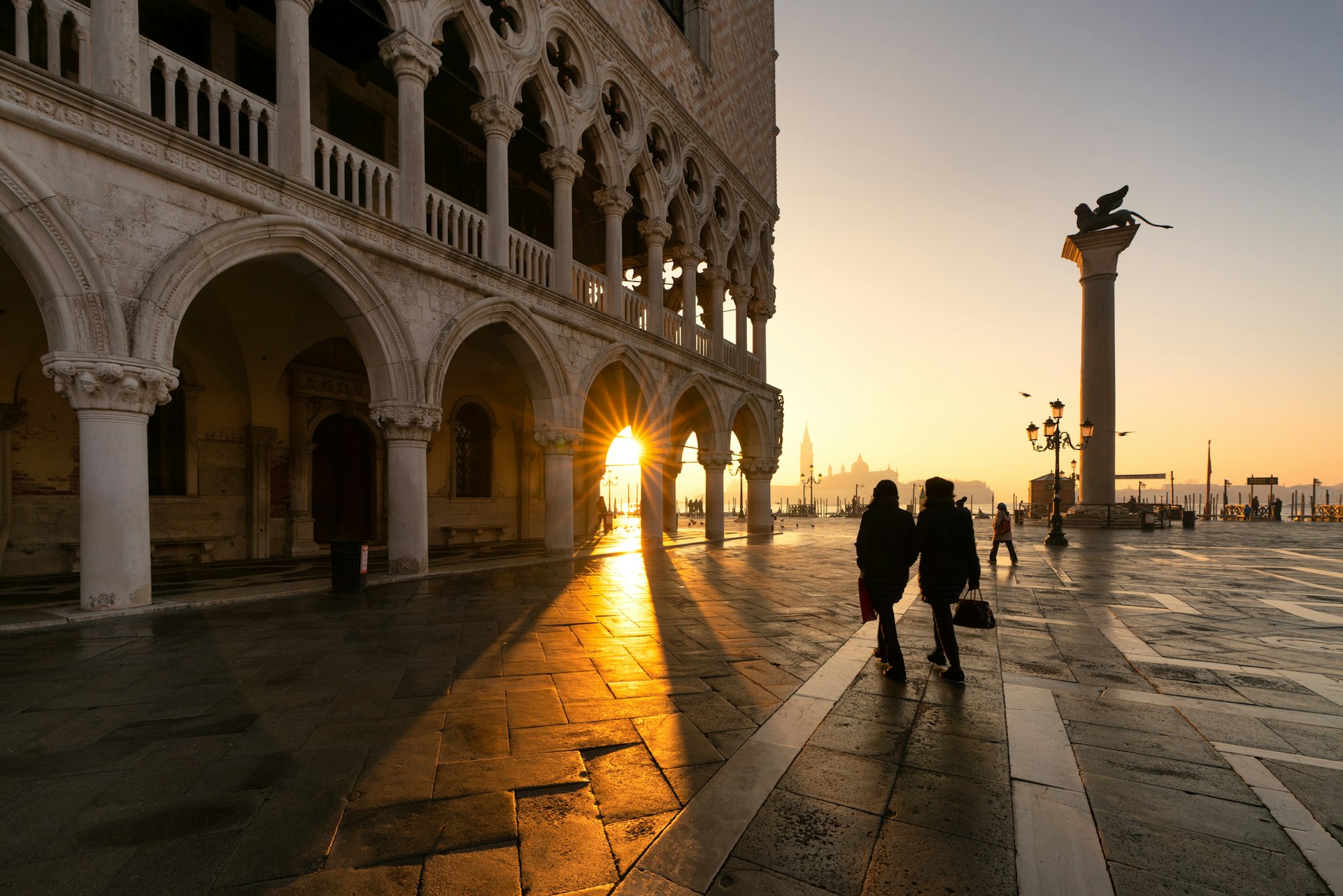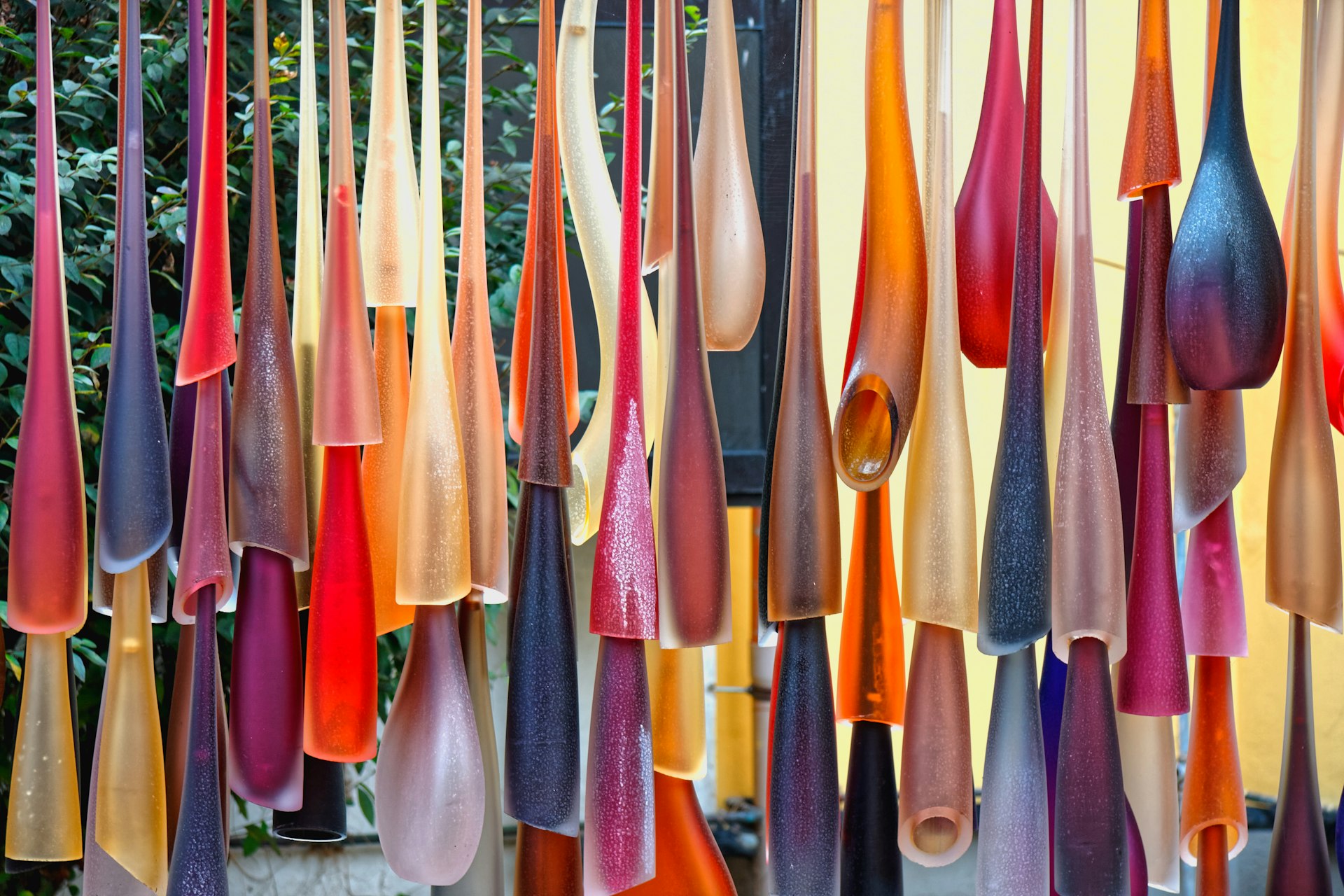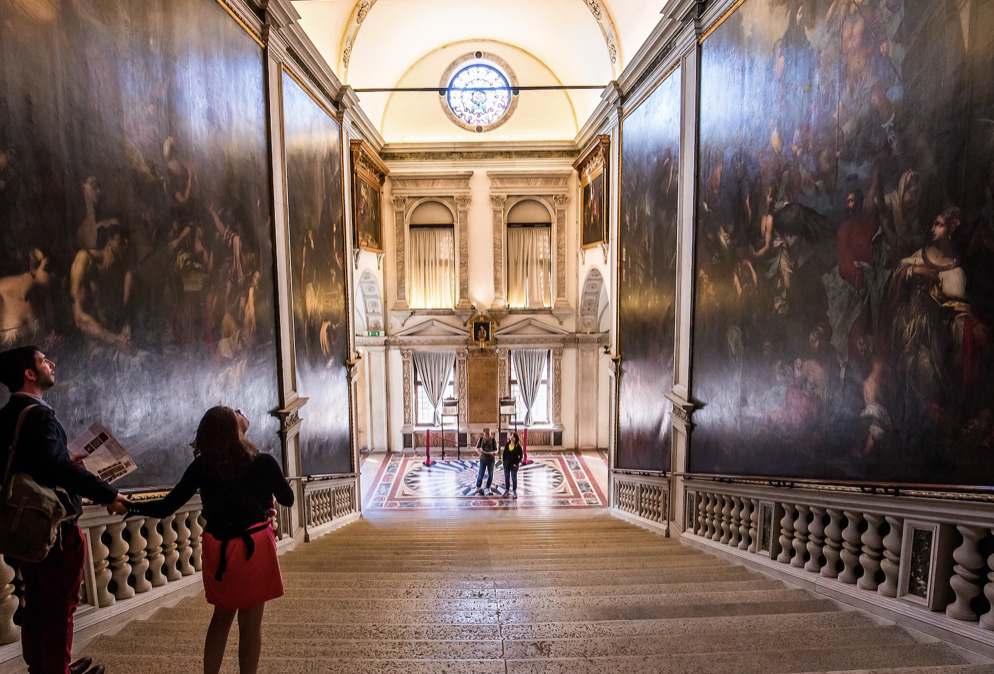Everyone wants to go to Venice, Italy and who can blame them? A fairytale lagoon on which 118 islands float – linked by 400 bridges, covered in jaw-dropping palazzos and crammed with earth-shattering art whichever way you turn, this really is a place like no other. It’s also a place where all the stereotypes are true – to an extent. Yes, it’s spectacular – and yes, it’s just like the photos. But thanks to mass tourism, it’s also overcrowded and in precarious health.
Yet that’s not the whole story. Even in the busiest areas, step just one or two blocks away from the fray and you’ll find empty streets and local voices. Spend more time here – five days is a decent starter – and you’ll see that the real beauty of Venice isn’t in its blockbuster sights, like Piazza San Marco or the Rialto Bridge; it’s in the quieter spaces, where life goes on as it has done for centuries. And once you glimpse that life, you’ll want to protect it.
Overtourism is indeed devastating the city, but you don’t have to be part of it. Stay overnight in a hotel or B&B (not vacation rentals, which hollow out housing stock), eat in family-owned restaurants and buy souvenirs from Venice’s artisans who ply centuries-old trades. Then, not only are you helping the city stay alive, but you’re also ensuring a better trip. Because Venice done well is unforgettable – a trip to another world. Here are the 15 Best things to do in the city.

1. See what the fuss is about in Piazza San Marco
For many people, this waterfront square is Venice: the rolling domes of the basilica, the centuries-old cafes beneath the stately porticoes, the vast Campanile (belltower) throwing its shadow around the square, high tide occasionally sloshing around your feet. There’s so much to see around Piazza San Marco (or St Mark’s Square) that you could easily spend a day here.
Start in the Basilica di San Marco, the Byzantine basilica that glitters with golden mosaics inside. Then move on to the Campanile, where elevators whisk you up 98.6m (323ft) for jaw-dropper views of Venice and the lagoon. Spare a few hours for the Museo Correr, at the opposite end of the square from the basilica, which tells the story of the city through its objects. Need a break at any point? Stop for a coffee or a spritz at Quadri, our favorite of the 18th-century cafes in the square.
Local tip: Keen to understand these icons better? Time for some reading. Family-run Libreria La Toletta in Dorsoduro is Venice’s best bookshop, with literally hundreds of volumes about the city. For kids, tryPonte dei Sogni in Castello, whose beautiful picture books tell the history of the city.

2. Enter the seat of power at the Palazzo Ducale
If you only visit one museum in Venice, you need to make it this: the vast Palazzo Ducale (Doge’s Palace), the Republic of Venice’s seat of power for around 900 years. With its pink and white façade squaring off against the lagoon, it has everything: mindblowing art and architecture, plus a whole load of atmosphere.
There’s so much to see here – every single room is plastered with works by some of the greatest artists of all time – that you shouldn’t expect to take it all in. But it’s worth saving more time for the rooms and their art, and speeding across the famous Bridge of Sighs and through the grim prisons – although the latter is great for kids.
Planning tip: Queues can get long here so book your ticket in advance.

3. Sail down the Grand Canal
Venice may be a place for wandering, but its palazzos were built to be seen from the water. Take the number 1 Vaporetto (waterbus) which plies the Grand Canal, for one of the world’s greatest public transport routes.
You’ll find beauty every way you turn but heading south don’t miss: the Fondaco dei Turchi (once the headquarters for Arab and Muslim merchants, now the city’s natural history museum); Ca’ d’Oro, with its spectacular carved and marble-clad façade; Ca’ Foscari, the city’s beautiful university; and the bombastic octagonal Salute church, right before the Grand Canal meets the lagoon.
Local tip: Get off at Salute and walk down to Punta della Dogana, for the best lagoon views, and then up along the Zattere waterfront. From here you can pick up a number 2 Vaporetto which takes you to St. Mark’s Square from the other side.
4. Explore Rialto
Everyone who visits Venice wants to see the Rialto Bridge, the flouncy white bridge across the Grand Canal made of gleaming Istrian stone. Yet what the bridge leads to is more interesting. There’s been a market on the western side of the bridge for over 1000 years, and while it’s not the trading hub of centuries past, there’s still a lively fish market and a fruit and veg area too.
If you’re looking at the stalls, remember to buy something, and don’t get in the way of other shoppers – this is still a real market, even if many tourists treat it as an Instagram backdrop. Stop for a drink beside the Grand Canal on Campo Erbaria – Bancogiro is always a good bet for cicchetti (a small snack) – then lose yourselves in the surrounding alleyways, still full of food stores.
Planning tip: For a behind-the-scenes look at this most touristy of areas, take a tour with Go Guide, a local group of guides who focus on Rialto.

5. See the city’s best art at the Accademia
In Dorsoduro, sitting quietly at the end of the famous wooden Accademia Bridge, is one of Italy’s finest art museums, the Gallerie dell’Accademia. The meandering itinerary takes you through buildings packed with works that once hung from the city’s church walls, telling the story of Venetian art in the process. It starts with Paolo Veneziano, carries through to Carpaccio, Mantegna and Bellini, and then explodes into the finest works of Tintoretto, Titian and Veronese. If you only have two days in Venice, center your trip around these first five experiences.
Detour: Near the Accademia are two of Venice’s best artisans. At Cornici Trevisanello, the Trevisanello family has been making picture frames for the likes of Picasso for decades; they also make jewel-like smaller frames that make perfect souvenirs. Near Ca’ Foscari is bookbinderPaolo Olbi, who creates beautiful stationery with handprinted Venetian and Byzantine motifs. Further up towards Rialto, in Campiello dei Meloni, is Il Pavone, where Paolo Pelosin makes everything from stationery to earrings with exquisite marbled paper.
6. Eat cicchetti in a bacaro
Three essential words for your Venetian stay: ombra, cicchetti and bacaro. Ombra (shadow) is the local name given to a small glass of wine served in a bacaro – a traditional wine bar or tavern. It may only be a small glass but don’t forget to follow it with cicchetti – finger food-style bar snacks, rather like Spanish tapas. You’ll find bacari all over town – when you spot one that looks good, make sure you stop.
Local tip: These days most cicchetti are slices of baguette bread topped with anything from cheese to fish but don’t miss old-style ones like a hard-boiled egg with anchovies, or sarde in saor – sardines in a sweet-sour marinade with pine nuts and raisins.

7. Live the lagoon on Burano
Most visitors flock to Burano to photograph its gorgeous candy-colored cottages. Fair enough – but to do only that is to miss out on one of the most special places in the lagoon. A fishing community since medieval times, Burano’s relative isolation in the north lagoon – a 45-minute Vaporetto ride (or four-hour paddle) from Venice – has kept its culture intact. Or rather, it did until mass tourism hit.
Today, the Buranelli are assailed by crowds who come, photograph, and hit the boat back to town without spending a cent – but you can help them by practicing more sustainable tourism. Visit the Museo del Merletto which teaches you about the island’s lace-making tradition, and take a tour of the tranquil north lagoon with fisherman Andrea Rossi, who’ll sweep you past mudflats and islands in perfect peace, with birds overhead your only company. It’s definitely one of the top experiences in Venice to change everything you think about the city.
Local tip: Stop for lunch at the family-run Trattoria al Gatto Nero. Try the risotto di gò (goby fish risotto).
8. See the painful history behind the Jewish ghetto
The sinister word ghetto comes from the Venetian geto, or foundry – a clue to the past of this area, which was abandoned and undesirable when the Jewish community was forcibly settled here in 1516. Originally one tiny island, the area was expanded twice by the 17th century, with residents gated in every night, and living in eight-story ‘skyscrapers’.
Despite the appalling conditions, the Jewish community flourished here, building no fewer than five synagogues that were as lavish as Venice’s churches. Guided tours of the area get you access to some of them, including the atmospheric Scola Levantina, with scarlet-swaddled walls and a dark carved ceiling, redesigned by Venice’s 17th-century starchitect, Baldassare Longhena.
Planning tip: Note that the Museo Ebraico (Jewish Museum) is closed for renovation until further notice, but tours are ongoing. Book ahead.

9. Visit Venice’s Sistine Chapel
Forget Titian and Tiepolo – for many, Tintoretto is Venice’s greatest artist of all time. This is his finest work – filling two floors of a vast building with his paintings, including the ceiling. Once of Venice’s scuole – lay confraternities that did charity work in the community – the Scuola Grande di San Rocco was entirely decorated by Tintoretto to celebrate the end of the 1576 plague, which wiped out a third of the city.
There are more than 60 paintings of swirling Biblical scenes (Tintoretto revolutionized the depiction of movement and amped up the use of rich color), including on the roof of the main hall. It’s like Venice’s Sistine Chapel.
Planning tip: Many visitors see the Scuola and forget about the church of San Rocco, just outside. Don’t do that – there are yet more Tintorettos inside.
10. See the Grand Canal from Ca’ d’Oro
Nobody loved Venice like Baron Giorgio Franchetti. In 1894, he bought the 15th-century Ca’ d’Oro, a Gothic palazzo on the Grand Canal so lavish that it was named the “Golden House”. It had fallen into disrepair by the time he bought it and Franchetti dedicated his life to giving the house back its own – rebuilding, repairing, and filling it with sublime art. His ashes are now buried in the courtyard. From December 2022 to 2024, it’s undergoing a major restoration, but the gallery will remain open throughout, with some parts closed, stage by stage. The views of the Grand Canal and Rialto market are spectacular from its balconies.
Planning tip: The best way to arrive at Ca’ d’Oro is by traghetto – a large gondola-style boat that acts as a shuttle across the Grand Canal. The Santa Sofia stop is right by Ca’ d’Oro, and connects with the Rialto market.

11. Get to know glass on Murano
Floating in the lagoon a 10-minute Vaporetto ride north of Cannaregio, elegant Murano is a mini Venice with opulent waterfront palazzos, knockout churches, and even its own Grand Canal. It is best known for its glass blowers, as it has been for centuries. Start at the Museo del Vetro, the island’s glass museum, where you’ll learn that the art of glass-making was perfected in the Middle East, before Venice’s medieval trade links with Syria allowed it to copy and take it to new heights.
A small, easily digestible museum with a jewel-like collection, it’ll give you the background you need to appreciate the often tacky-looking glass ornaments in the shops. Ready to buy? We like Lucevetro, where Cecilia Cenedese designs products and gets island maestri to craft them for her, while Wave Murano Glass offers furnace tours and even lessons.
Detour: You may be here for glass but don’t miss Murano’s churches. The Basilica dei Santi Maria e Donato has a knockout 12th-century marble mosaic ‘carpet’, while the church of San Pietro Martire has works by Bellini, Tintoretto, and Veronese.
12. Go to church
You know that some of Venice’s best art lies in its churches but in a city that, legend used to say, had a church for every day of the year, how do you know where to start? Buying a Chorus pass is the way forward. Eighteen of Venice’s loveliest churches belong to this group – each is €3 to enter, but a pass for all of them, valid for one year, is just €12.
They’re dotted all around the city, so as you do your obligatory Venice wander, you can pop in for an art fix. They’re all worth seeing but the standouts are Santa Maria dei Miracoli (a marble-clad Renaissance jewel), and San Sebastiano, frescoed and painted almost entirely by Veronese.
Planning tip: Some of the churches have limited opening hours. When you get your pass, ask for the map of the churches – it also lists opening hours.
13. Visit the thoroughly modern Querini Stampalia museum
The Fondazione Querini Stampalia is a fascinating space in a 16th-century palazzo, combining a museum, gallery, library archive, and a modernist wing and garden designed by Venice’s 20th-century architect, Carlo Scarpa. The main gallery has works by the likes of Palma il Vecchio, Canaletto and Bellini, whose Presentation at the Temple is one of the city’s finest artworks.
It’s also a brilliant example of a modern museum: the information panels, redone in 2022, contextualize the art and teach you about Venetian life, from the poor conditions for house staff to arranged marriages and the banning of homosexuality.
Detour: In the square outside is the church of Santa Maria Formosa, one of the few true Renaissance buildings in Venice.
14. See Venice’s birthplace on Torcello
This island just across the water from Burano is where Venice began. The first island of the lagoon to be settled, and then a bustling early medieval boomtown, today Torcello is a haunting place of around a dozen inhabitants, and one big draw: the Basilica di Santa Maria Assunta, the vast church which dominated the north lagoon for centuries. Still visible from the airport, its interior sparkles with Byzantine-style mosaics from the 11th century. It’s pure magic.
Planning tip: Visit Torcello before Burano – if you do it the other way round, you’ll be trying to board a packed Vaporetto back to Venice.
15. Pay your respects to Tintoretto
Peaceful Cannaregio is worth a stroll for its tranquil canals lined with grand palazzos, and for the church of Madonna dell’Orto. This big barn of a place was Tintoretto’s neighborhood church – today he’s buried here, along with his artist children Domenico and Marietta, and its walls are covered with his paintings, as well as works by Titian, Palma il Giovane, and Cima da Conegliano.
Detour: A short walk away is the church of Sant’Alvise, part of the Chorus association, and famous for its spectacular trompe l’oeil ceiling.
For Booking Inquiries – Please contact WGY Travel at 888-949-0808 or [email protected]

